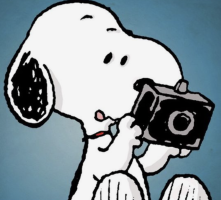You are using an out of date browser. It may not display this or other websites correctly.
You should upgrade or use an alternative browser.
You should upgrade or use an alternative browser.
Here is what Canon is announcing next, including the EOS R7, EOS R10 and RF-S lenses [CR3]
- Thread starter Canon Rumors
- Start date
I think Canon could have made a little effort with the lenses and make them brighter or wider.
Only 29mm on the wide end is not especially amazing, even the tiny and very cheap M kit lens starts at 24mm equivalent.
Only 29mm on the wide end is not especially amazing, even the tiny and very cheap M kit lens starts at 24mm equivalent.
Upvote
0
All those auto everything cameras make me become a very sloppy photographerNot I apparently, or at least I didn't used to. The best pictures I have taken were shot before my cameras had any of those things.
Last edited:
Upvote
0
I’m not expecting Canon to put a big bet on APS-C bodies or lenses. Has anyone seen good data that shows APSC-C is a growth/growing market? I haven't but may have missed it. Both an R7 and R10 could be produced with minimal investments by Canon just to test the waters.
Upvote
0
Upvote
0
You apparently don't know much about the history of photography. For decades, entry level zooms started around 35mm. Heck, Tamron now make a very expensive, very desirable 35-150mm f/2-2.8 that basically covers the essential range for portrait and event photographers. 75mm lenses are used widely in the cinema field, where they're often seen as great companions to 50mm lenses. Jun Hirokawa, a legendary lens designer for Pentax, felt that 77mm was the ideal portrait focal length over 85mm or 90mm. 55mm and 58mm kit lenses were much more common in the '60s and '70s, before everyone settled on 50mm as the standard focal length.These all have useless viewangles on APS-C, you pay full-frame glass and at least the 24-105 & 70-200 are NOT small. On APS-C a 50mm = not really a portrait lens, 35mm = not really a 50mm, 24-105 missing the wide end etc. EF-M22 is a small lens, EF-M32 is small and a true 50 equivalent etc.
This is why a a unified mount is shit. If you look at at EF-mount, Z-mount or F-mount the APS-C lenses were always bigger than needed, half assed and missing important lenses, b/c you can always gEt ThE fUlLfRaMe LeNs and ApS-c Is EnTrY tO FuLlFrAmE.
What you seem to perceive as the 'correct' angles of view are a relatively recent product of the last three decades. It took until the 2000's for 24mm to become a common focal length, and with it came the much more widespread rise of 70mm, a focal length that's used for more portraits than any other (thanks to it being a typical end of constant f/2.8 zooms). It's all very, very relative.
Upvote
0
I beg to differ. Pentax have been offering Shake Reduction in all but their cheapest cameras for decades now... and Sony used to do the same, back on the A-mount. Their DSLRs (and later SLTs) all had SteadyShot. All. And they competed well on price against Canon and Nikon. Olympus have been putting IBIS on almost everything as well, and Panasonic followed suit a couple of years ago on most bodies. I don't buy the price argument - if much smaller, less profitable manufacturers can add it, even to very small cameras, then cost is not the issue. It's almost surely "differentiation" (AKA the cripple hammer, which in this case is used by the Big Three, not just Canon).IBIS will not go in cheap cameras because it is expensive to implement, not simply because Canon is trying to segment the lines. Sony has made very similar decisions and Minolta (which Sony bought) invented IBIS. If you want a cheap camera, you will get a mix of features that that will give you the best pictures you can get for that price. More money, more features. Further, IBIS is of little use with long telephoto lenses and "reach" has been the mantra of the vast majority of those hoping for such (a) camera(s).
Upvote
0
For future growth, Canon needs something affordable for first-time camera buyers. The R10 will probably be somewhere in that range.Has anyone seen good data that shows APSC-C is a growth/growing market?
It's only one country, but (Source: BCN) the APS-C M50/KissM is the best selling mirrorless camera in Japan.
Last year, (CIPA) 4,963,682 "Lenses for smaller than 35mm format Cameras" were shipped. I assume that most of those were kit lenses, that came with non-FF cameras.
Last edited:
Upvote
0
Or does it allow you to strongly emphasize composition?All those auto everything cameras make me become a very sloppy photographer
Upvote
0
45mm has been "standard focal" length for a long time even since pre WW II. Except Lieca choose the 50mm. Here comes the SLR (Exakta, Pre WW II) 58mm was used as " standard lens", due to the long fringe distance and avialble type of glass, they cannot design a good 50mm lens. Pantax, Minolta etc choose 55mm later due to more mature lens design. Later on, SLR was able to use 50mm as "standard lens" due to more mature design and more available type of glass. The "Holy Trinity" for Leica ( range finder) has been alway 35, 50 and 90. 77mm is a very unusual focal length for 135 film camera. As for zoom started at 35mm that is also due to the design problem in the old days (in the 60's). First zoom llens is called ZOOMAR made by Voigtlander, in the 60's for it SLR. It started at 35 mm due to design restriction.You apparently don't know much about the history of photography. For decades, entry level zooms started around 35mm. Heck, Tamron now make a very expensive, very desirable 35-150mm f/2-2.8 that basically covers the essential range for portrait and event photographers. 75mm lenses are used widely in the cinema field, where they're often seen as great companions to 50mm lenses. Jun Hirokawa, a legendary lens designer for Pentax, felt that 77mm was the ideal portrait focal length over 85mm or 90mm. 55mm and 58mm kit lenses were much more common in the '60s and '70s, before everyone settled on 50mm as the standard focal length.
What you seem to perceive as the 'correct' angles of view are a relatively recent product of the last three decades. It took until the 2000's for 24mm to become a common focal length, and with it came the much more widespread rise of 70mm, a focal length that's used for more portraits than any other (thanks to it being a typical end of constant f/2.8 zooms). It's all very, very relative.
Last edited:
Upvote
0
Makes me wonder what the people with the insatiable and never-ending need for more and more camera tech features think of those photographers out there taking awesome photos with film cameras and manual lenses!
About as much as they think about sculptors or painters I suspect.
Upvote
0
Yes, But with high pixel count and photoshop I can be a little bit sloppy too. P.S. I cut my teeth on photography by doing Kodakchrome. No adjustment and no cropping after the shutter is pushed. Also Kodakchrome is not cheap. Has to be sent to Australia for processing. So I was very careful before I press the shutter release everytime.Or does it allow you to strongly emphasize composition?
Upvote
0
Is it just me - or do all the R7 and R10 mock up pics - look like they have full frame sensors in the bodies - and not crop sensors.
(CR used to get this right. What's happened?)
(CR used to get this right. What's happened?)
Upvote
0
The differemce here is that there are other ways to build that digital crutch with less complexity and engineering. I don't think anyone is saying image sabilisation isn't great, but IBIS as a specific technology is unnecessary and complex, and like it or not adds cost. GoPro have neither lens nor sensor stabilisation and yet somehow don't suffer at all from movement in a tiny lightweight body. The main issue here is people with "decades of experience" not accepting change and insisting that they know best. With technology sometimes no experience at all is better.At one time, these were all called "crutches" by some people who learned without them and felt they were unnecessary if you knew what you were doing.
Upvote
0
Theoretical "normal" is around 43mm. My first 35mm camera was a Yashica rangefinder with a fixed 45mm lens. By using the same focal length all the time, my brain got used to that perspective, and I could previsualize compositions when I didn't even have the camera with me. Sometimes I would come back to the spot and take the picture. It affected how I saw things, appreciating beauty and order in ordinary scenes and things. I'm probably a better photographer today than if I had started off with the level of control I have now.45mm has been "standard focal" length for a long time even since pre WW II.
Upvote
0
Will Canon stick with the 1.6x crop factor? With a new RF mount, how likely will it choose a 1.5 crop factor like other manufacturers?
Upvote
0
That would probably make adapted EF-S lenses either vignette heavily or have bad corner quality. They would also have to develop new sensors from scratch instead of refining what they already have.Will Canon stick with the 1.6x crop factor? With a new RF mount, how likely will it choose a 1.5 crop factor like other manufacturers?
Seems unlikely.
Upvote
0
Not me. I like all the help modern cameras provide. I lap them up. I could do without the added help under normal circumstances, but when the going gets tough, all the added help from the camera is appreciated: Good AF, Good Exposure, Stabilization, Flippy screen etc etc come in real handy.All those auto everything cameras make me become a very sloppy photographer
Upvote
0
Similar threads
- Replies
- 289
- Views
- 16K
- Replies
- 65
- Views
- 15K
- Replies
- 190
- Views
- 18K
- Replies
- 170
- Views
- 19K


